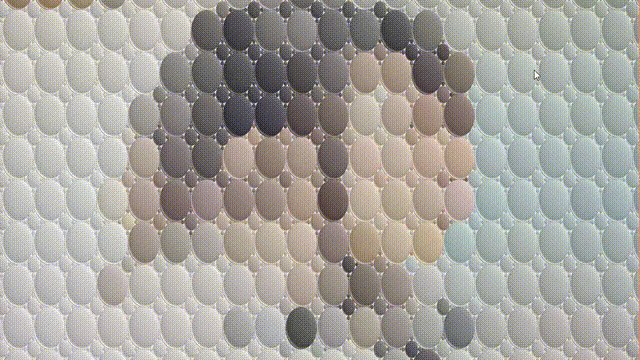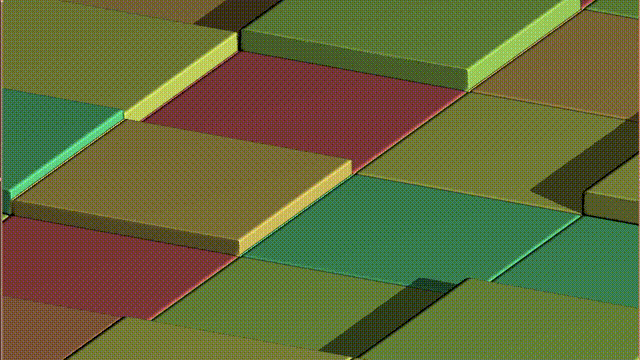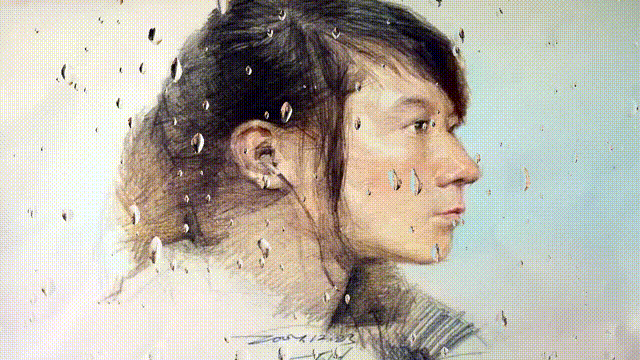Shader code
shader_type canvas_item;
// Variation on Ford's Circles stuff: http://nrich.maths.org/6594
// Inspired by Sarconix: https://www.shadertoy.com/view/4dsXWs
////////////////////////////// defines
// Diameter of biggest circle
#define DIAMETER 100.0
// Nb of iterations = nb of circles of decreasing size to build
#define ITERATIONS 50
// Time in second(s) to zoom in or out
#define ZOOM_TIME 10.0
// Heightmap coef [0.0 100.0]
#define HEIGHT_COEF 4.0
// Light direction
#define LIGHT_DIR vec3(1.0, 1.0, 1.0)
// Ambiant lighting
#define LIGHT_AMBIANT vec3(0.1, 0.1, 0.1)
// Mix between original texture/procedural circles [0.0 1.0]
#define MIX_FACTOR 0.5
// Point of view
#define EYE vec3(0.57735, 0.57735, 0.57735)
// Strength of specular reflection [0.0 1.0]
#define SPEC_FACTOR 0.45
#define pi 3.1415926535897932384626433832795
#define hfpi 1.5707963267948966192313216916398
#define PI pi
#define HFPI hfpi
uniform sampler2D iChannel0;
uniform vec4 iMouse;
////////////////////////////// methods
// Most important method: Ford
float AnimateDiameter()
{
float i = floor(TIME / ZOOM_TIME);
float r = (TIME - ZOOM_TIME * i) / ZOOM_TIME;
float sinr = pow(sin(HFPI * r), 2.0);
float k = ( mod(i, 2.0) == 0.0 ? sinr : 1.0 - sinr );
return max(k*DIAMETER, 1.0);
}
// Compute normal at position pos, as if we were on an half-sphere with center (0,0)
vec3 ComputeNormal(vec2 pos, float radius)
{
// Determine the distance to the center of the circle.
float d = length(pos);
float h = sqrt(radius*radius - d*d);
return (normalize(vec3(pos.x,pos.y,HEIGHT_COEF*h)));
}
vec3 Ford(vec2 posSample, vec2 iRes)
{
float diameter = AnimateDiameter();
float radius = diameter / 2.0;
vec2 screenPos = posSample*iRes.xy - (iRes.xy / 2.0);
//position of sample relative to circle: (0,0) = center
vec2 pos = vec2(0.0);
bool inside = false; //true iff sample is in a circle
float rSmall = 0.0;
// Build biggest circles of radius: r0
float r0 = radius;
pos = mod(screenPos, vec2(diameter, diameter)) - vec2(r0, r0);
if (length(pos) < r0)
{
inside = true;
rSmall = r0;
}
// Build smaller circles surrounded by 4 big circles
float r1 = 0.0;
vec2 mod1 = vec2(0.0);
if (!inside)
{
mod1 = mod(screenPos + vec2(r0, r0), vec2(diameter, diameter)) - vec2(r0, r0);
r1 = (sqrt(2.0) - 1.0)*r0;
pos = mod1;
if (length(pos) < r1)
{
inside = true;
rSmall = r1;
}
}
// Iterations - begin
// We build circles smaller at each iteration
// radius r[n] of nth circle is given by:
//
// (r[0] - r[1] - 2*r[2] - ... - 2*r[n-1])^2
// r[n] = ----------------------------------------------------
// 2 * (r[0] + r[0] - r[1] - 2*r[2] - ... - 2*r[n-1])
//
//
if (!inside)
{
float rBig = 0.0;
float distLeft = r0 - r1; //distance to 2 big circles point-of-contact
float r = r1; //radius of current circle
for (int n=0; n<ITERATIONS; n++)
{
if (!inside)
{
rSmall = (distLeft - 2.0*rBig)*(distLeft - 2.0*rBig)/(2.0*(r0 + distLeft - 2.0*rBig));
//West
pos = mod1 + vec2(rBig + rSmall + r, 0.0);
if (length(pos) < rSmall)
{
inside = true;
}
if (!inside)
{
//East
pos = mod1 - vec2(rBig + rSmall + r, 0.0);
if (length(pos) < rSmall)
{
inside = true;
}
if (!inside)
{
//North
pos = mod1 - vec2(0.0, rBig + rSmall + r);
if (length(pos) < rSmall)
{
inside = true;
}
if (!inside)
{
//South
pos = mod1 + vec2(0.0, rBig + rSmall + r);
if (length(pos) < rSmall)
{
inside = true;
}
}
}
}
//updates for next iteration
r = r + rBig + rSmall;
distLeft = distLeft - 2.0*rBig;
rBig = rSmall;
}
}
}
// Iterations - end
// Now we're done with building circles, we give them some 3d look & feel
///////////////////////// post-production
//heightmap
vec3 normal = vec3(0.57735);
vec2 centerC = vec2(0.0);
float distance2center = radius;
if (inside)
{
centerC = posSample - pos/iRes.xy;
distance2center = length(pos) + r0;
normal = ComputeNormal(pos, rSmall);
}
//sample texture using coordinates of circle's center
// NOTE: Use a large negative bias to effectively disable mipmapping, which would otherwise lead
// to sampling artifacts where the UVs change abruptly at the pixelated block boundaries.
centerC.y = 1.0 - centerC.y; //upside-down correction
vec3 colTex = texture(iChannel0, centerC, -32.0).rgb;
vec3 light = normalize(LIGHT_DIR);
// Point light
vec3 colProc = vec3(0.8, 0.8, 0.8) * clamp(dot(normal, light), 0.0, 1.0);
// Ambiant ligth
colProc += LIGHT_AMBIANT;
vec3 colFinal = mix(colTex, colProc, MIX_FACTOR);
// Reflection
vec3 eye = normalize(EYE);
vec3 ref = reflect(eye, normal);
// Specular
float spec = pow(clamp(dot(light, ref), 0.0, 1.0), 16.0);
colFinal += SPEC_FACTOR * spec;
// Set the final fragment color.
return colFinal;
}
// Sample a procedural texture (anti-aliasing)
// Stolen from IQ: https://www.shadertoy.com/view/MdjGR1
vec3 FordAA( vec2 uv, vec2 iRes )
{
#define SAMPLING_STRENGTH 1000000000.0
#define NB_SAMPLES 3 //0: no anti-aliasing
if (NB_SAMPLES == 0)
{
return Ford( uv, iRes );
}
else
{
// calc texture sampling footprint
vec2 ddx = dFdx( uv );
vec2 ddy = dFdy( uv );
int sx = 1 + int( clamp( SAMPLING_STRENGTH*length(ddx), 0.0, float(NB_SAMPLES-1) ) );
int sy = 1 + int( clamp( SAMPLING_STRENGTH*length(ddy), 0.0, float(NB_SAMPLES-1) ) );
vec3 no = vec3(0.0);
for( int j=0; j<NB_SAMPLES; j++ )
for( int i=0; i<NB_SAMPLES; i++ )
{
if( j<sy && i<sx )
{
vec2 st = vec2( float(i), float(j) ) / vec2( float(sx),float(sy) );
no += Ford( uv + st.x*ddx + st.y*ddy, iRes);
}
}
return no / float(sx*sy);
}
}
vec2 Rot2d(vec2 uv, float angle){
mat2 rot_matrix = mat2(vec2(sin(angle), -cos(angle)), vec2(cos(angle), sin(angle)));
return uv * rot_matrix;
}
////////////////////////////// main
void fragment()
{
vec2 iResolution = 1.0 / SCREEN_PIXEL_SIZE;
vec2 uv = UV;
//pan
uv -= iMouse.xy / iResolution.xy;
uv.y = 1.0 - uv.y;
vec3 col = FordAA( uv , iResolution);
// Set the final fragment color.
COLOR = vec4(col,1.0);
}






